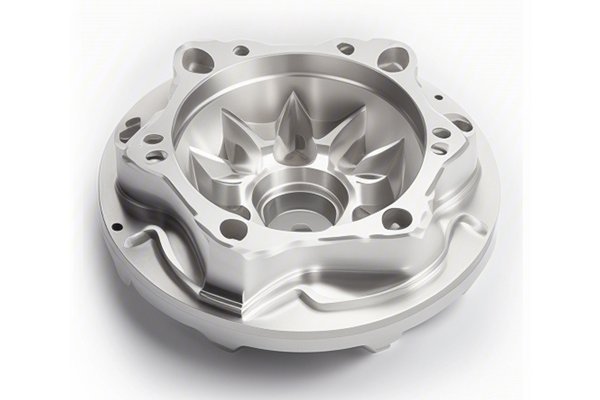When it comes to manufacturing, an interesting fact to consider is that nearly 52% of all CNC machine shops report quality issues resulting from inadequate traceability processes. This startling statistic is a wake-up call for manufacturers who may still operate under outdated systems. In an age where precision and accountability are paramount, ensuring the traceability of the surface treatment process during CNC machining is not just a value proposition; it’s a necessity. But how can manufacturers effectively achieve this traceability? In this extensive guide, we will explore the solutions that can make a world of difference in the CNC machining landscape.
Understanding CNC Machining and Surface Treatment
Before diving into the nitty-gritty of ensuring traceability, let’s first lay a foundation. CNC (Computer Numerical Control) machining is a process that uses computer-controlled machines to shape materials into desired forms. It offers high precision and reproducibility, making it a go-to method for various industries, including aerospace, automotive, and medical.
Surface treatment, on the other hand, refers to the processes that alter the surface of a material to enhance its functionality, such as improving corrosion resistance, wear resistance, or aesthetics. Common surface treatments include anodizing, plating, and coating. The quality of these treatments can significantly affect the performance and longevity of the machined parts.
The Importance of Traceability
Traceability in manufacturing guarantees that every step of the production process is documented and can be tracked back to its origin. This becomes especially crucial in CNC machining for the following reasons:
Challenges in Establishing Traceability
Despite the advantages, several challenges inhibit the establishment of a robust traceability system in CNC machining. These include:
Solutions for Ensuring Traceability
Now that we understand the significance of traceability and the challenges involved, let’s delve into effective strategies for ensuring that the surface treatment process of each batch of parts is traceable during CNC machining.
Investing in real-time data collection systems can significantly enhance traceability. These systems can track parameters during both CNC machining and surface treatment processes.
This approach not only minimizes human error but also provides instantaneous feedback for quality control.
Another effective method for ensuring traceability is through barcoding or RFID (Radio-Frequency Identification) tagging.
This makes it easier to track which treatments were applied to which parts and when.
Establishing detailed SOPs is essential for effective traceability.
By standardizing processes, manufacturers can reduce variability and enhance traceability.
Human resources play a critical role in maintaining traceability protocols.

Adopting specialized software can dramatically simplify traceability processes.
These software solutions not only streamline the data collection process but also provide analytical tools to drive continuous improvement.
To ensure that traceability systems are functioning as intended, regular audits and inspections should be conducted.
Working closely with quality assurance teams can further solidify your traceability framework.
Though still emerging, blockchain technology offers tremendous potential for traceability.
Implementing blockchain solutions can be a game-changer for industries that require the highest level of traceability.
Real-World Applications and Case Studies
To illustrate the practical implications of the outlined solutions, let’s explore some case studies from various industries.
Case Study 1: Aerospace Industry
In the aerospace sector, one manufacturer faced significant quality assurance challenges due to ineffective traceability.
By implementing a real-time data collection system, along with RFID tagging, they were able to track every part’s journey through CNC machining and surface treatment. As a result, the company not only improved quality control but also enhanced customer satisfaction by providing detailed reports on parts’ traceability.
Case Study 2: Automotive Sector
An automotive component manufacturer discovered that inconsistent surface treatments were causing product failures.
With employee training and standardized operating procedures, they established a culture of accountability. Coupled with software solutions, they achieved significantly higher production quality and reduced recall rates.
Case Study 3: Medical Devices
A medical device company adopted blockchain technology for its traceability processes.
This unprecedented move allowed them to track every component of their products, from raw materials to completed items. The transparency offered by blockchain won them major contracts with hospitals requiring rigorous compliance measures.
In conclusion, ensuring traceability in the CNC machining and surface treatment process is no longer just a luxury; it’s a critical necessity. The advantages of proper traceability extend beyond compliance and quality control; they represent a pathway to fostering trust and transparency in the manufacturing ecosystem.
From real-time data collection and RFID tagging to employee training and advanced software solutions, several actionable strategies can be implemented. By doing so, manufacturers can drastically optimize their processes, minimize errors, and provide their customers with the assurance they seek.
The significance of traceability in manufacturing cannot be overemphasized. In an age where every step of production can have far-reaching consequences, integrating robust traceability measures is not just wise; it’s vital for the longevity and success of any manufacturing business. As we move forward, it’s worth reflecting on the power of traceability, not just as a means of compliance, but as a competitive advantage in an increasingly complex market.






